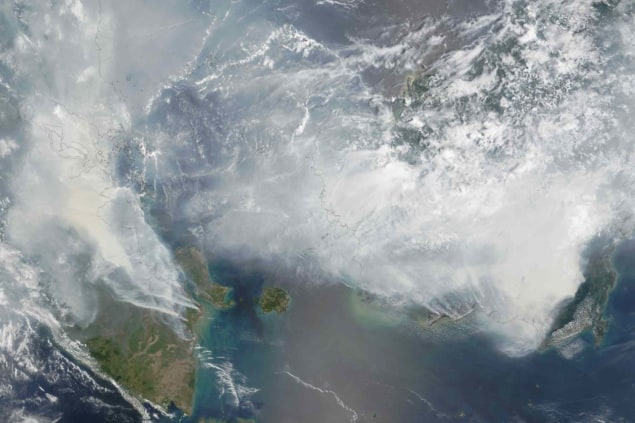
The fires that devastated Indonesia in 2015 were chiefly linked to drought, topography and population, researchers have learned. Fires were most likely in flat, sparsely populated areas where there had been little rainfall. Although the connection to rainfall was no surprise, the other influences were unexpected.
The results underline the importance of establishing an early-warning system for droughts, according to Janice Ser Huay Lee of Nanyang Technological University of Singapore. “Mitigation of fires would come from monitoring ignition sources during droughts, especially in low-population peatland, in areas that have been burnt in recent years, and in close proximity to roads,” she says. “These criteria could be incorporated into the Indonesian authorities’ existing fire-monitoring systems.”
Indonesia’s 2015 dry season saw 2.6 million hectares of land burn in wildfires of unprecedented severity. The resulting air pollution caused the country $16.1 billion in losses to agriculture, forestry, trade, tourism and transportation, and contributed to more than 100,000 premature deaths in the region.
The role that drought played in the crisis might be obvious: 2015 was an El Niño year, and such conditions are strongly associated with fires in Southeast Asia. Rainfall is just one element, however, and identifying the other parts of the picture could help prevent future disasters on this scale.
To determine the power of those other influences, Lee and colleagues Jocelyne Shimin Sze and Jefferson, also at Nanyang Technological University of Singapore, compiled 18 possible contributory factors to weigh against the likelihood of fires in three provinces of Sumatra, where burning was most extensive.
Fire risk is broadly a product of two components: circumstances that predispose a landscape to fire; and sources of ignition. The team’s list of variables encompassed both, spanning everything from environmental conditions such as rainfall, slope and forest degradation, to human elements like economics, population and conflict.
The researchers conducted analyses at two different geographical scales. First, they characterized each pixel in a satellite image according to the potential contributing factors, and classified it depending on whether burning did or did not take place within that 1 sq. km. The output was an ordered list showing the relative influence of each factor on overall fire risk.
In the other analysis, the group considered the possible predictors at the regency scale — a political division larger than a city and smaller than a province. From these predictors, they created a set of statistical models that varied in how efficiently they accounted for the number of fires in each regency.
Both analyses showed that fires were more likely where mean monthly rainfall was below 150 mm, the ground was flat enough for agriculture or peat extraction, and population density was low but not zero. Proximity to roads was a secondary factor also common to both.
“For these to come up as strongly affecting both fire count and occurrence suggests that they play an important role in contributing to the number of fires within the regency and occurrence of fires at that particular location,” says Sze.
There were differences between the scales, however. “Factors related to economic land use came out more strongly under the regency-scale analysis, and factors related to forest degradation came out more strongly under the pixel-scale analysis,” says Sze. “It is partly a reflection of the different techniques used, but it also says something about evaluating drivers of fires when we use a count or an occurrence response for fires.”
The team reported the findings in Environmental Research Letters (ERL).



